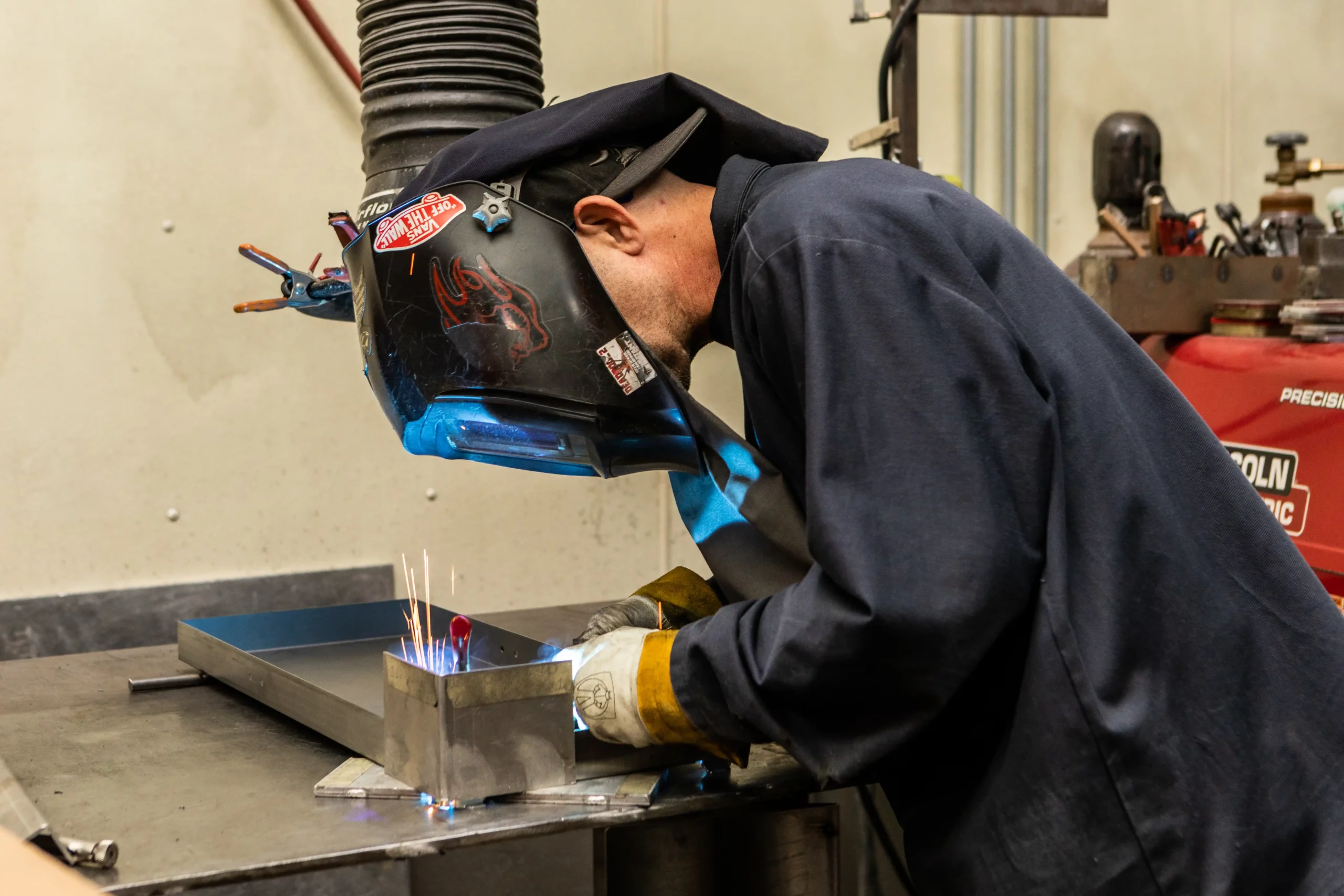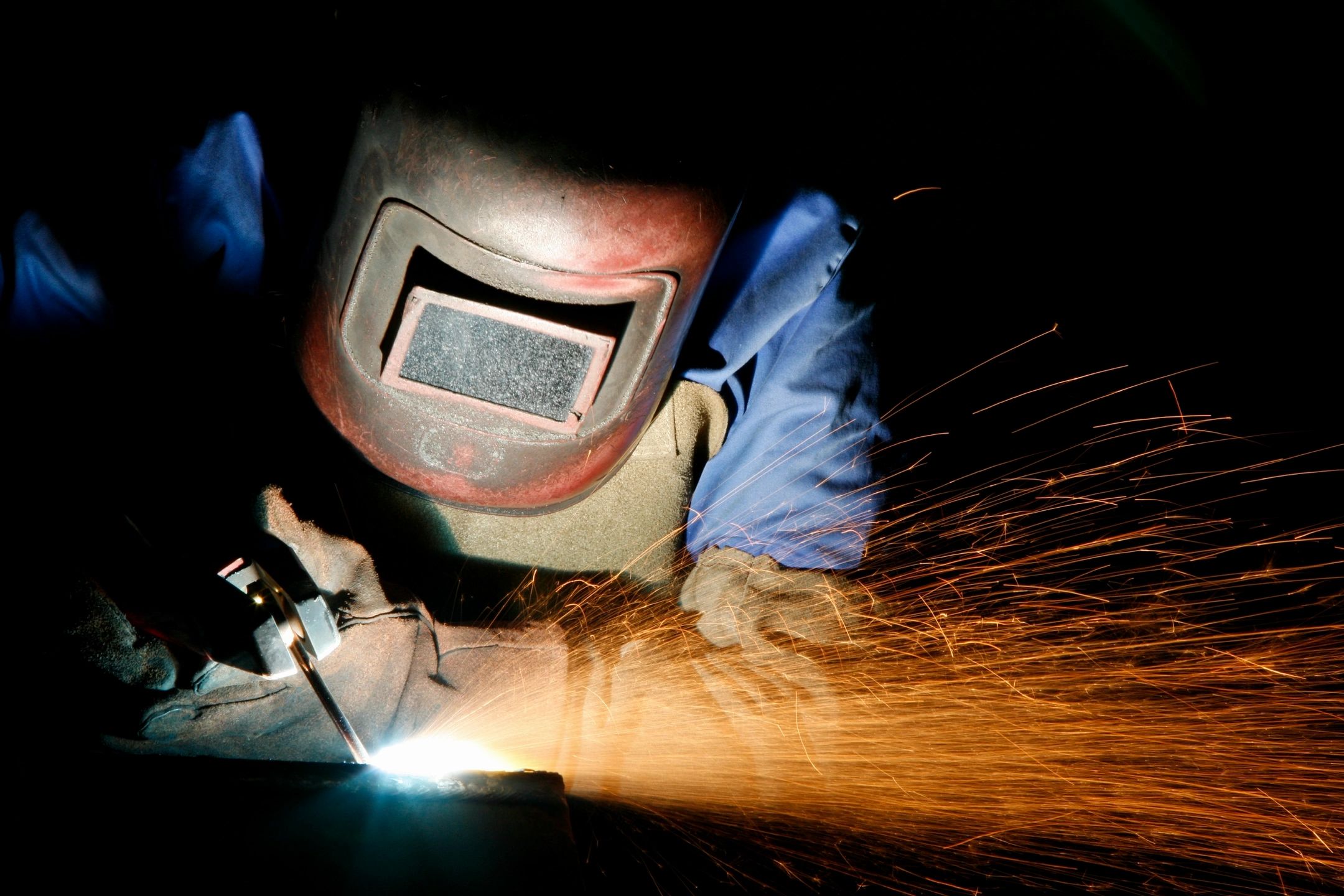Everything about Welding: Secret Insights Into Techniques and Ideal Practices for Success
Welding encompasses a selection of strategies, each matched for certain materials and applications. Comprehending these methods, such as GMAW, SMAW, and TIG, is necessary for accomplishing perfect results. Additionally, the appropriate tools and safety and security methods can not be overlooked. As preparation and troubleshooting play vital functions in the welding process, understanding these components can substantially improve the top quality of the end product. What are the crucial variables that guarantee an effective weld?
Comprehending Different Welding Methods
Welding strategies encompass a selection of methods, each matched to specific applications and products. Amongst one of the most usual methods are Gas Metal Arc Welding (GMAW), Protected Metal Arc Welding (SMAW), and Tungsten Inert Gas Welding (TIG) GMAW, likewise recognized as MIG welding, is preferred for its rate and adaptability, making it ideal for slim materials. SMAW, or stick welding, is favored for its simplicity and efficiency in outside atmospheres, particularly with thicker metals. TIG welding offers precision and control, making it ideal for detailed job and non-ferrous steels (Welding). Each strategy has its unique advantages and factors to consider, allowing welders to choose the finest approach based on the task's demands, product kind, and wanted results. Comprehending these strategies is important for successful welding
Important Welding Devices and Tools
While numerous welding strategies need particular skills, the appropriate equipment and tools are just as essential for achieving high quality outcomes. Vital welding tools consists of welding devices, which differ depending upon the strategy-- such as MIG, TIG, or stick welding. Protective gear, including handwear covers, headgears, and aprons, guarantees security and convenience throughout the process. Furthermore, clamps and fixtures help protect materials in place, guaranteeing precision in welds. Consumables like welding poles, cord, and shielding gas are additionally important parts that influence the top quality of the weld. Tools such as cutters and grinders help with surface area prep work and post-weld ending up, contributing to a specialist result. Buying premium devices ultimately boosts the effectiveness and efficiency of welding jobs.
Safety And Security Practices in Welding
Proper safety methods are crucial in the welding sector to protect workers from prospective dangers. Welders must wear appropriate individual safety devices (PPE), consisting of helmets with appropriate shading, handwear covers, and flame-resistant clothes. Adequate air flow is crucial to decrease direct exposure to damaging fumes and gases produced during the welding procedure. Additionally, employees need to be learnt the right handling of welding tools to avoid crashes. Fire safety procedures, such as keeping flammable products far from the welding area and having fire extinguishers conveniently offered, are required. Routine inspections of devices and work spaces can assist identify prospective hazards prior to they result in accidents. By sticking to these security practices, welders can create a more secure working environment and minimize risks associated with their profession.
Readying Products for Welding
Preparing materials for welding is a crucial step that considerably affects the high quality and honesty of the end product (Welding). Correct prep work includes cleansing the surface areas to eliminate impurities such as oil, rust, and dirt, which can compromise the weld. Methods such as grinding, sanding, or using solvents are typically utilized to attain a tidy surface area. In addition, making sure that the materials fit with each other comfortably is vital; gaps can lead to weak welds. It's also essential to take into consideration the positioning and positioning of the components, as this will influence the simplicity of welding and the last result. Ultimately, selecting the appropriate filler material and ensuring compatibility with the base steels is vital for accomplishing strong, resilient welds
Tips for Achieving High-Quality Welds
Achieving top quality welds requires attention to information and adherence to best techniques throughout the welding process. Correct joint preparation is important, making certain surface areas are free and tidy from impurities. Selecting the proper filler material and welding technique based upon the base steels is essential for optimal bonding. Preserving regular traveling rate and angle while welding can advertise and stop problems uniformity. Furthermore, controlling heat input is vital; too much warmth can cause bending and deteriorated joints. If necessary, consistently checking the welds throughout the procedure permits for prompt adjustments. Ultimately, using suitable post-weld therapies, such as cleaning and stress alleviation, can boost the toughness and honesty of the weld, ultimately ensuring a successful outcome.
Fixing Typical Welding Issues
Welding frequently presents difficulties that can impact the high quality and stability of the last product. Common concerns such as porosity, irregular weld beads, and overheating can arise, each calling for certain fixing techniques. Understanding these troubles is crucial for welders to improve their abilities and achieve perfect outcomes.
Porosity Issues Discussed
Porosity can frequently be forgotten, it continues to be a vital issue in welding that can compromise the stability of a finished item. Porosity refers to the visibility of little gas pockets within the weld bead, which can lead and weldskill 185 compromise the joint to premature failing. This issue commonly develops from contaminants, moisture, or improper protecting gas insurance coverage like it during the welding process. To reduce porosity, welders need to confirm that the base products are clean and completely dry, make use of suitable protecting gases, and keep consistent welding specifications. Regularly inspecting the equipment and atmosphere can additionally help recognize possible issues prior to they materialize in the weld. Addressing porosity efficiently is important for attaining solid, long lasting welds that fulfill top quality criteria.

Inconsistent Weld Beads
Inconsistent weld beads can greatly influence the high quality and toughness of a completed product. Numerous aspects add to this issue, consisting of inappropriate traveling rate, incorrect amperage settings, and inconsistent electrode angles. When the welder relocates too promptly, a bead might show up narrow and lack infiltration, while relocating as well gradually can create extreme buildup. In addition, utilizing the incorrect amperage can lead to either undercutting or extreme spatter, both of which compromise weld stability. The welder's strategy, such as inconsistent lantern activity, can additionally lead to unequal bead look. To mitigate these issues, welders must concentrate on keeping stable, regulated activities and making certain proper devices setups to attain harmony in their welds. Uniformity is key to achieving solid and dependable welds.
Getting Too Hot and Bending Issues
Excessive heat throughout the welding procedure can cause substantial getting too hot and buckling concerns, influencing the architectural integrity of the workpiece. go to my site These troubles often manifest as distortion, which can compromise placement and fit-up, making more assembly challenging. Aspects adding to overheating include the choice of welding criteria, such as voltage and travel speed, along with the kind of product being bonded. To mitigate these problems, welders must maintain consistent traveling speed and appropriate warm input while checking the work surface temperature level. Additionally, pre-heating or post-weld warmth treatment can help reduce tensions triggered by fast air conditioning - Belgrade Fabrication. Routine examination and adherence to best methods are essential in preventing getting too hot and ensuring the long life and integrity of welded structures
Frequently Asked Questions
What Are the Career Opportunities in the Welding Sector?
The welding industry uses varied job possibilities, including settings as welders, educators, inspectors, and designers. Professionals can work in manufacturing, building, aerospace, and automobile markets, gaining from strong demand and competitive incomes in various roles.
Just How Can I Enhance My Welding Speed Without Compromising High Quality?
To boost welding rate without sacrificing quality, one should exercise efficient methods, keep devices, optimize settings, and boost hand-eye control. Regular training and looking for responses can likewise considerably contribute to attaining quicker, premium welds.
What Accreditations Are Readily Available for Welders?
Various accreditations exist for welders, consisting of those from the American Welding Society (AWS), the National Facility for Construction Education and Study (NCCER), and numerous industry-specific companies. These qualifications enhance employability and show skill proficiency.
Exactly How Does Welding Affect the Qualities of Metals?
Welding affects the homes of steels by modifying their microstructure, which can cause changes in ductility, strength, and solidity. Warmth input and air conditioning rates during the procedure substantially affect these product characteristics.
Can I Bonded Dissimilar Metals Together?

Comments on “Key methods to deal with warping in Montana Mobile Welding and Repair Belgrade”